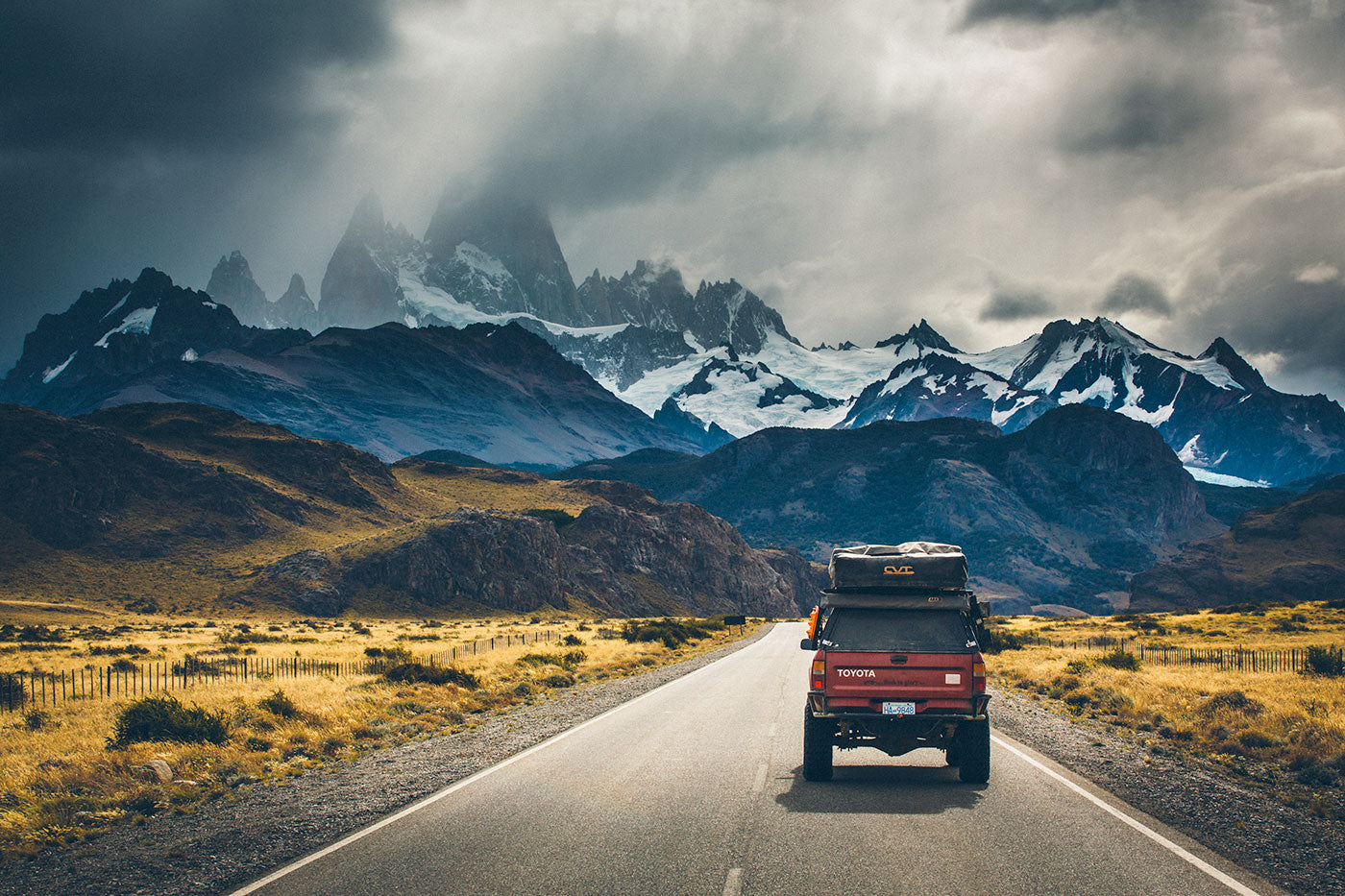
"Where the Streets Have No Name"
What to Think of Before Embarking on an Adventure by Van
Leave your home, your comfort zone behind and drive to places "Where the Streets Have No Name", like U2 used to sing. Let the passing landscapes make you forget your everyday life. As a voyager on a four-wheeled home, you have the freedom to stay wherever you want, as long as you want, and how you want it.
PLAN AHEAD
Choosing a vehicle and setting a provisional departure date will depend on available funds and the time needed to get your machine ready. Expect delays but don't skimp on the details: the more effort you put in at this stage researching, doing paperwork, and preparing your vehicle, the fewer frustrations you'll experience later.
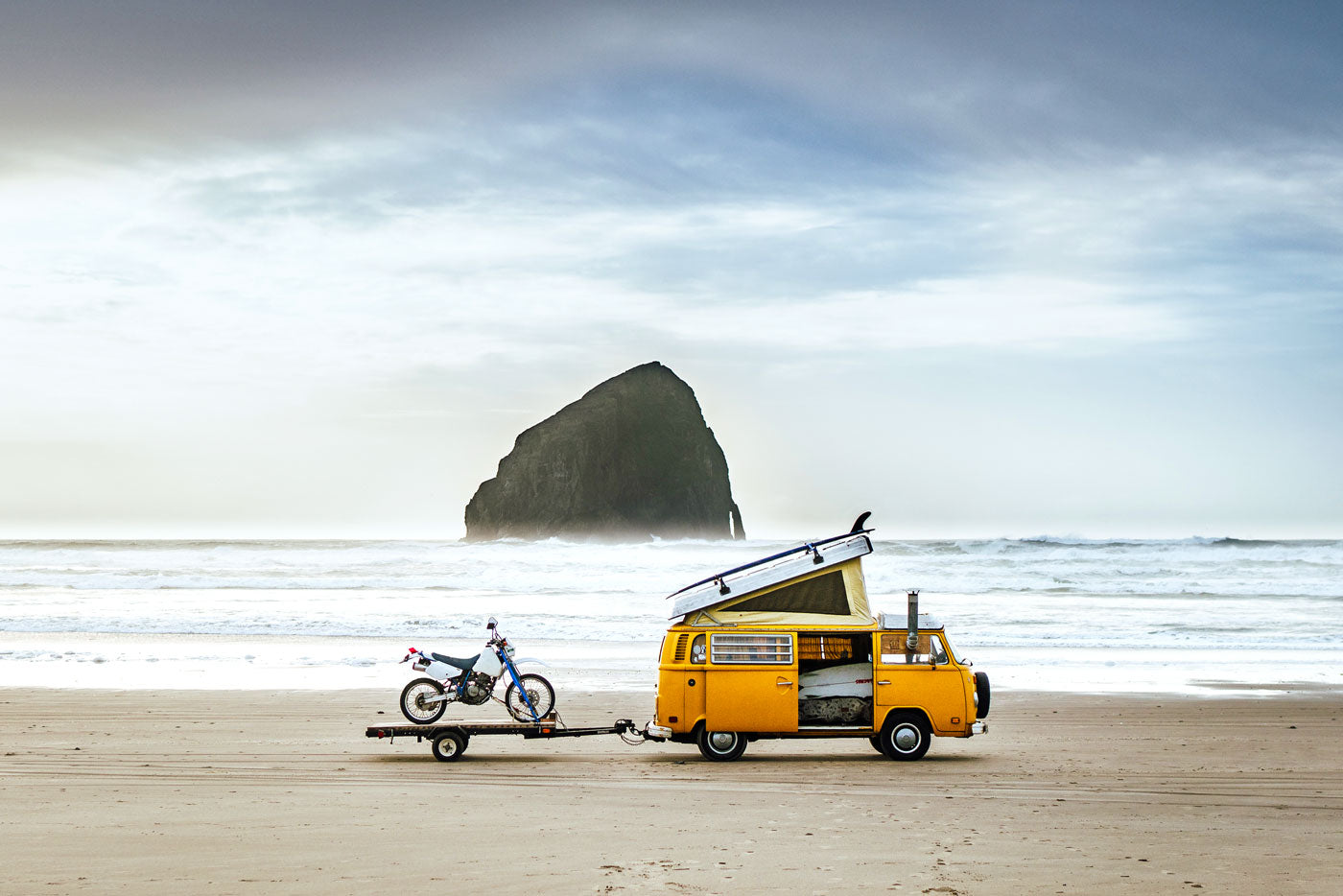
Adventure photographer James Barkman bought this original 1976 Volkswagen Westfalia Campmobile from a lawyer off Craigslist. Barkman spent his early twenties living out of the van–surfing, climbing, and camping along the West Coast from California to Canada. (Photo: James Barkman)
Allow a year if you're starting without a vehicle, half that if you already have one. Buying and equipping a van, truck, or bus can cost more than the trip itself. Don't assume road travel in poorer countries is inexpensive. Cooking and sleeping aboard will certainly cut costs and is a major part of the adventure.
Fuel will most certainly be your greatest expense, so budget €1 a liter and at least €10,000 for two people to cross any one continent. Plus shipping your vehicle back if that's part of the plan. Browse through our book Hit the Road for tips, which vehicles serve you best depending on the road conditions. Also, read the stories about the people leaving their permanent homes behind to travel the roads.
MAKE YOURSELF AT HOME
Gear is best packed on the floor in crates below a semi-fixed platform rather than in rattly side cupboards. Think about accessibility: tools and spares can be buried, but daily items must always be handy. Home-kit roller-draw systems look sleek, but plastic crates or banana boxes cost little to nothing.
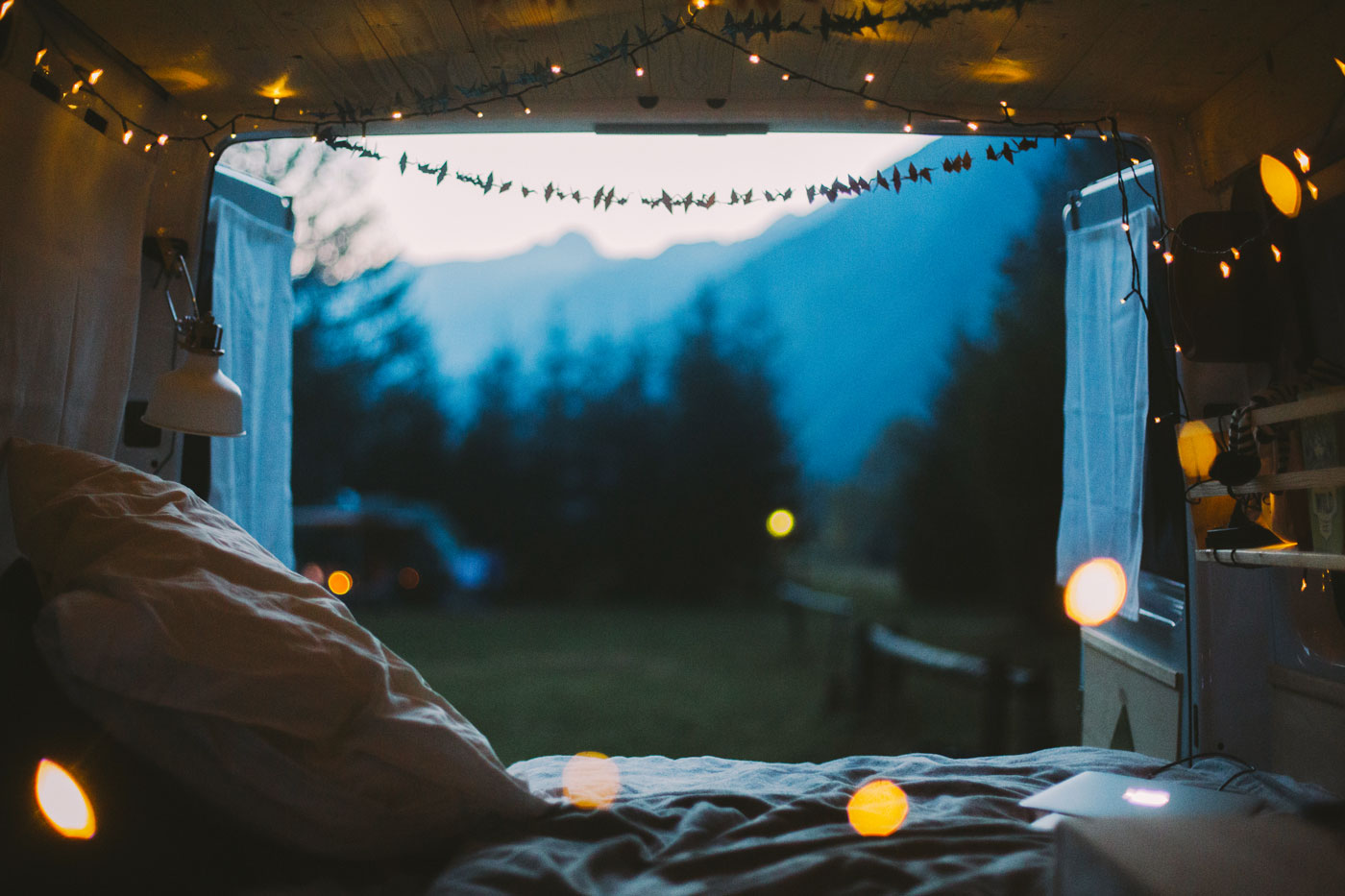
The ceiling of this 2004 Mercedes-Benz Sprinter 208 is covered in light wood paneling. There is a full sized bed in the vehicle as well as a kitchen. Photographer and owner of the Sprinter Julia Nimke did all the rebuild herself. (Photo: Julia Nimke)
Make sure beds deploy with minimum effort, as you may be doing it daily. A self-erecting tent is airier, but a regular tent can go anywhere.
Invest in solar panels as you'll need electricity for your lights, laptop, stereo, and phones.
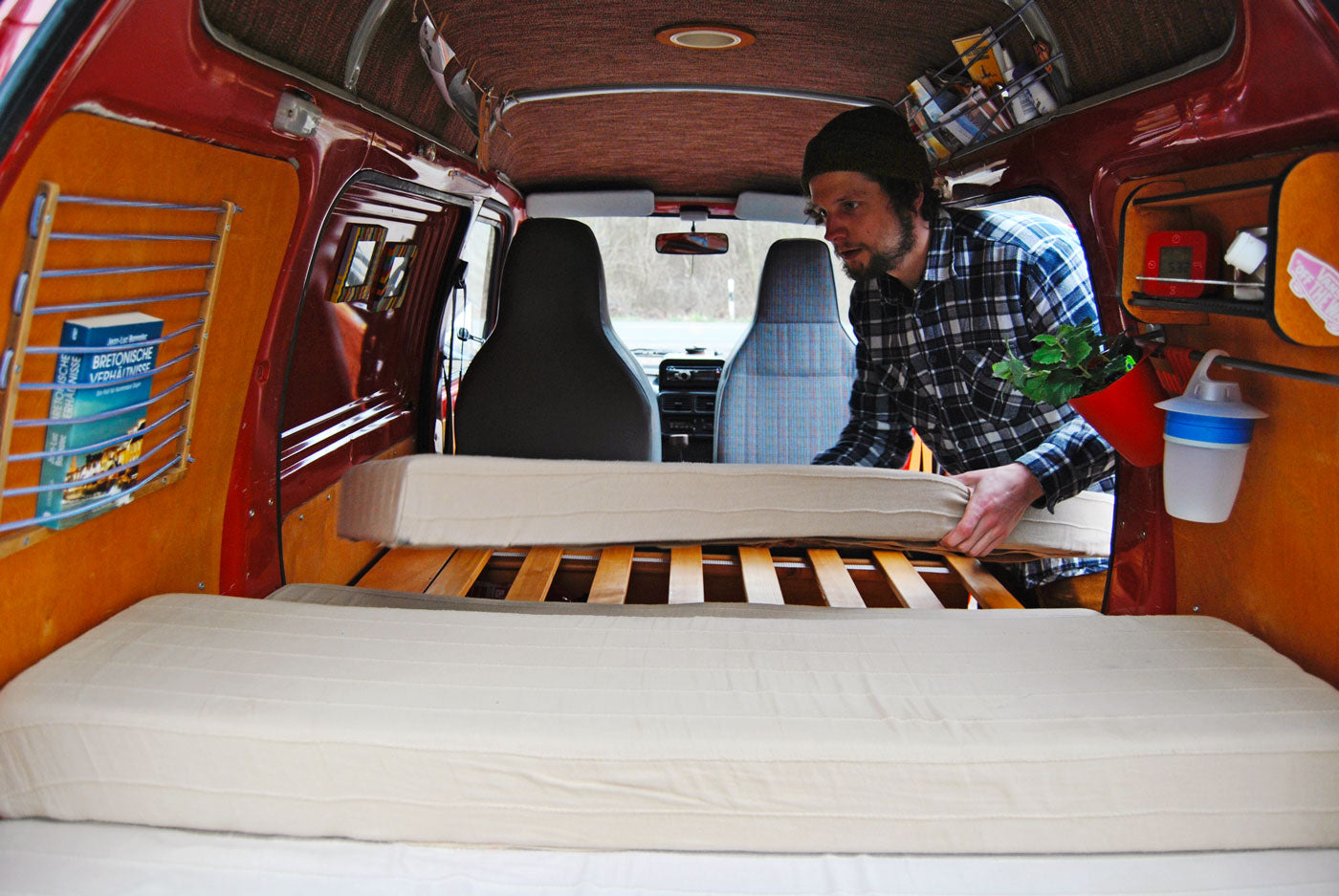
The inside of this Daihatsu Hijet measures only 3 x 1.4 x 1.8 meters. Still, there is room for a bed, table, and clothing storage, but only because of brilliant planning. (Photo: Daniel Kalinowski)
YOU DON'T NEED A SILVER FORK TO EAT GREAT FOOD
Cooking is best-done al fresco using bottled gas, which you can buy and refill wherever you are. Built-in propane tanks are an option in a big rig. Make sure to add low-draw LED lighting inside and out to ease whipping up those meals in the dark.
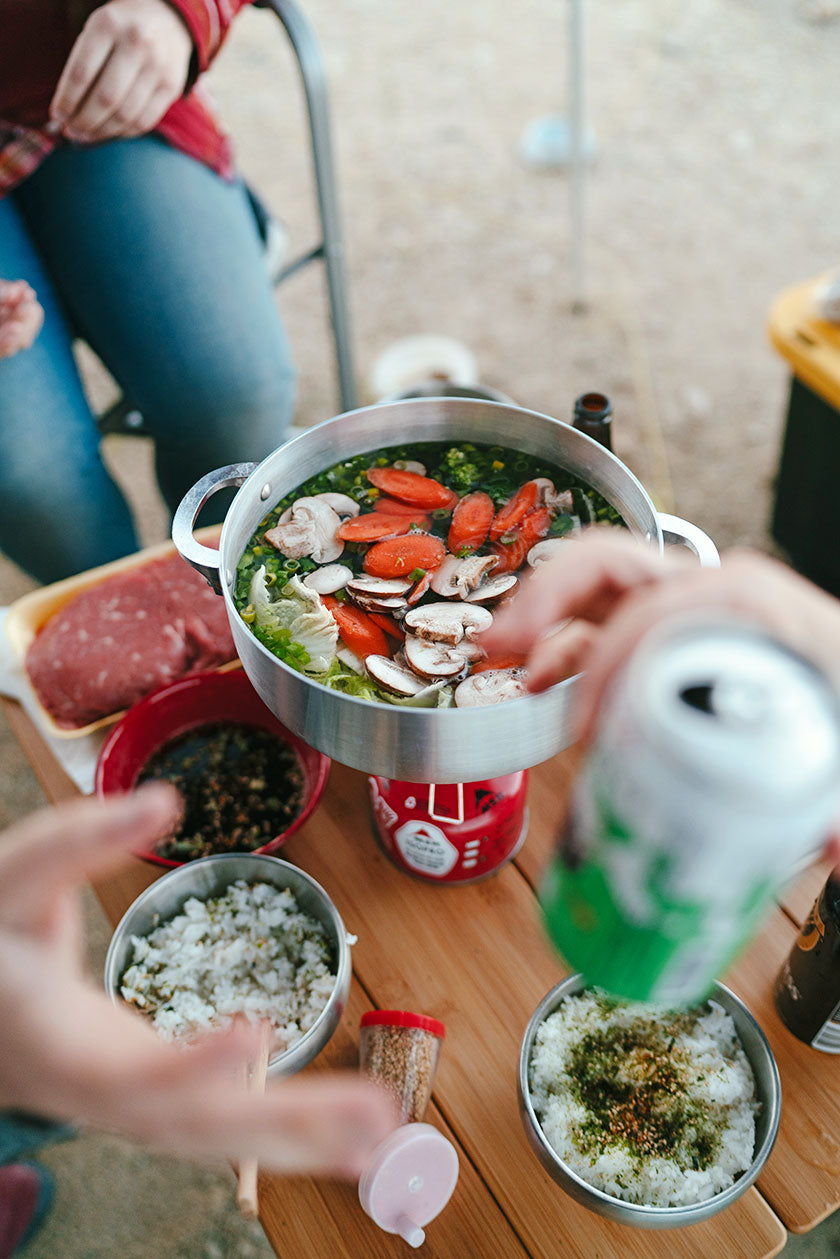
There's no need for an elaborate built-in kitchen. Stews and soups are perfect for cooking in the outdoors. Above there is Japanese shabu-shabu hotpot being cooked on top of a simple gas burner outside a vehicle. (Photo: Karissa Hosek and Linhbergh Nguyen)
As for keeping your food fresh, a fridge can be considered a luxury while a cooler costs peanuts. Same goes for water: built-in pumps and sinks are nice, but a gravity feed into a washing-up bowl is bombproof.
You're pressed for space as it is. Leave any single-task cooking equipment at home. All you will need is a few pots, a good-sized cast iron skillet, a kettle, a chef's knife, and a paring knife. You're on the road. Your food can be fancy–but your kitchen doesn't need to be.

The owners of this 2002 Volkswagen T4 installed a pop-up roof, flooring, furniture, and a kitchen. (Photo: Selina & Frank)
Don't be afraid to use various seasonings. Especially when cooking at altitude versus the sea level, your taste buds will be a little more subdued. Here's a collection of the best recipes for outdoor cooking that will add some spice to meals on the road or in the outdoors.
TAKE YOUR VEHICLE FOR A FIRST SPIN
When you're done equipping your van, schedule a test run for a taste of life on the road without the commitment. You're sure to pinpoint some oversights and refinements.

Let the country road take you to the place where you belong. (Photo: Lilli Gramberg-Danielsen & Lukas Beuster)
And while some prefer to drive in complete silence, most travelers might want to invest some precious time in compiling at least one well-curated playlist for their road-trip. We went ahead and prepared one for you to start with. So you can get the engine running and roll down your windows!
For more inspiration on spending time in the outdoors, check our Escape titles.


